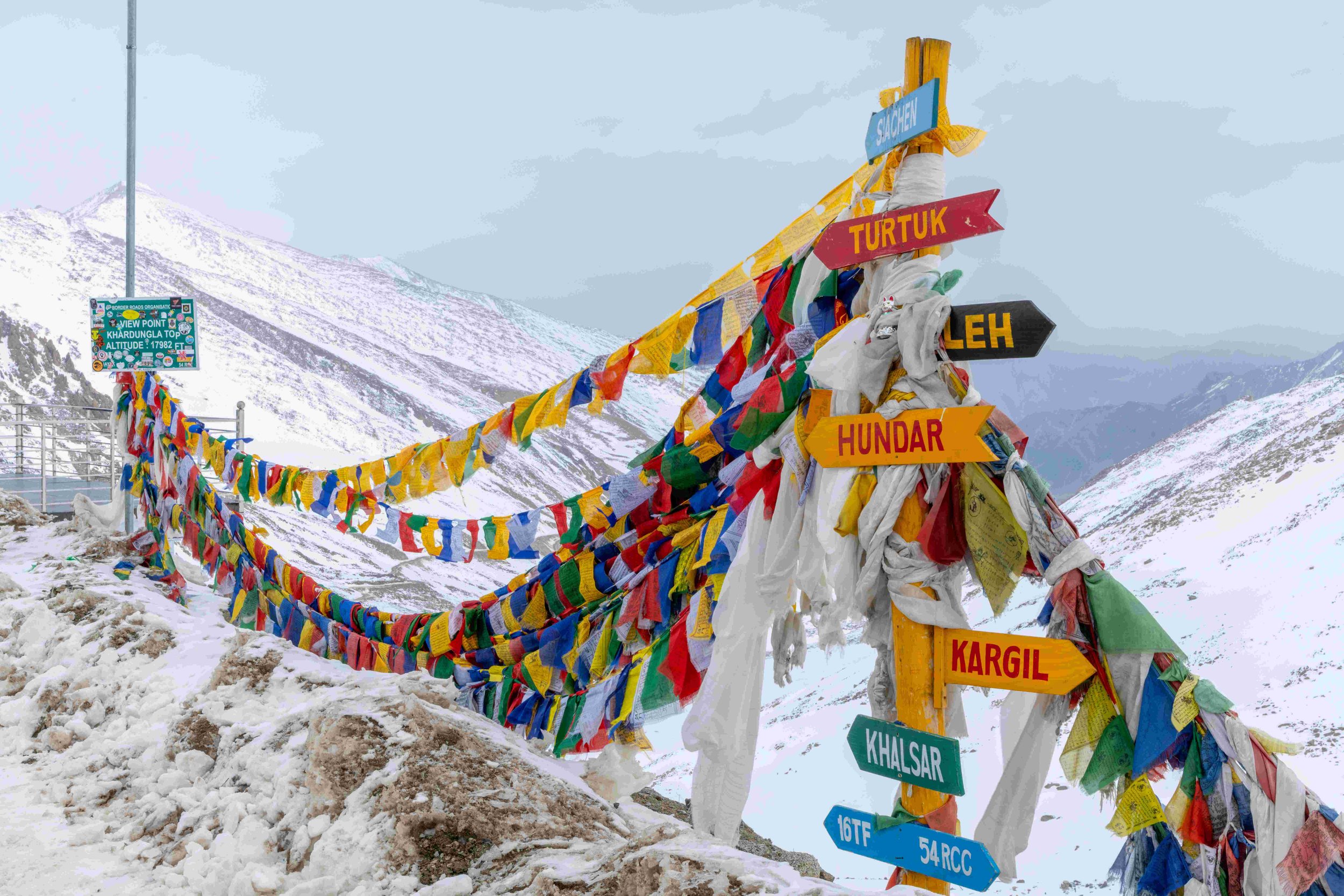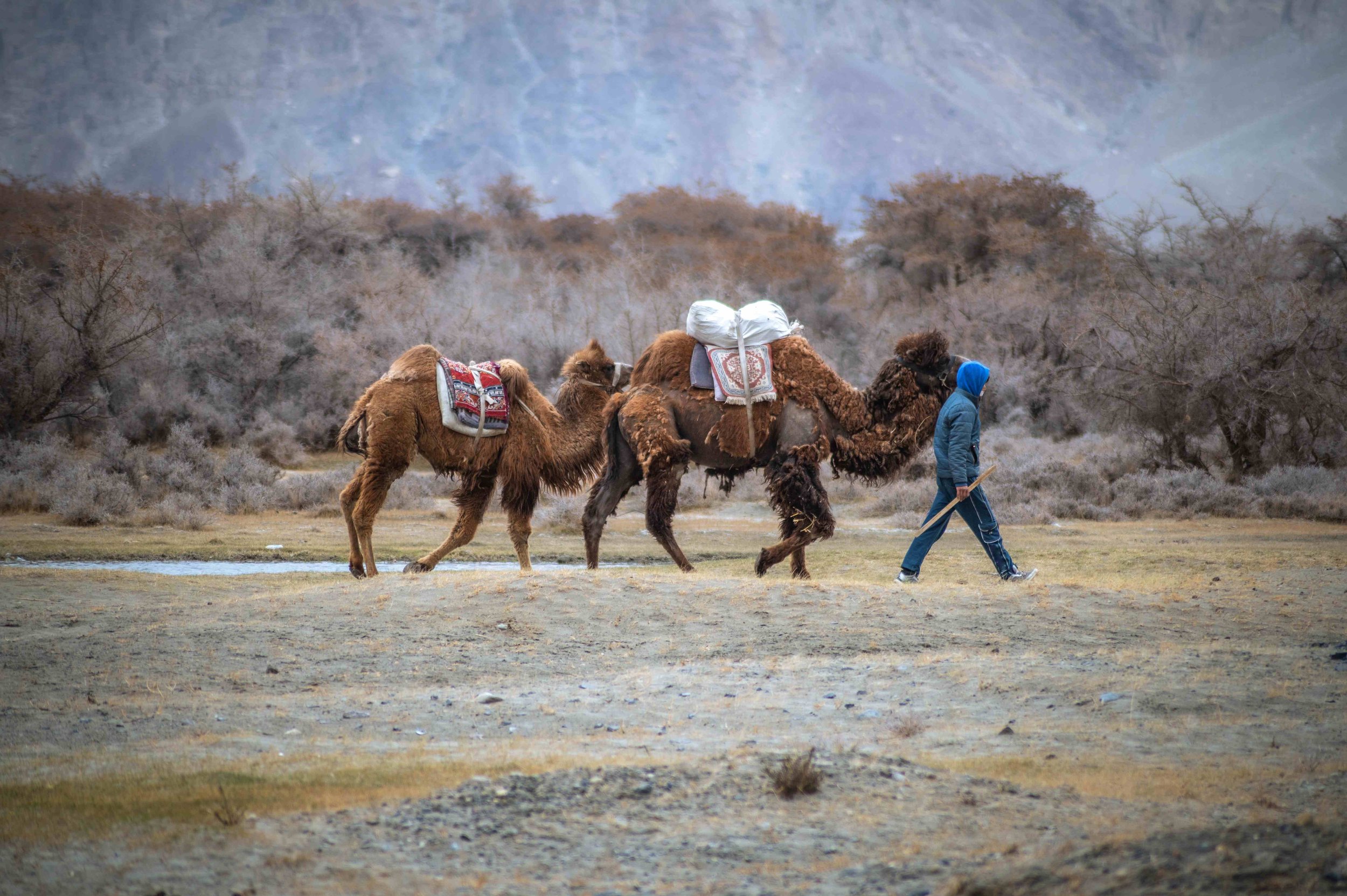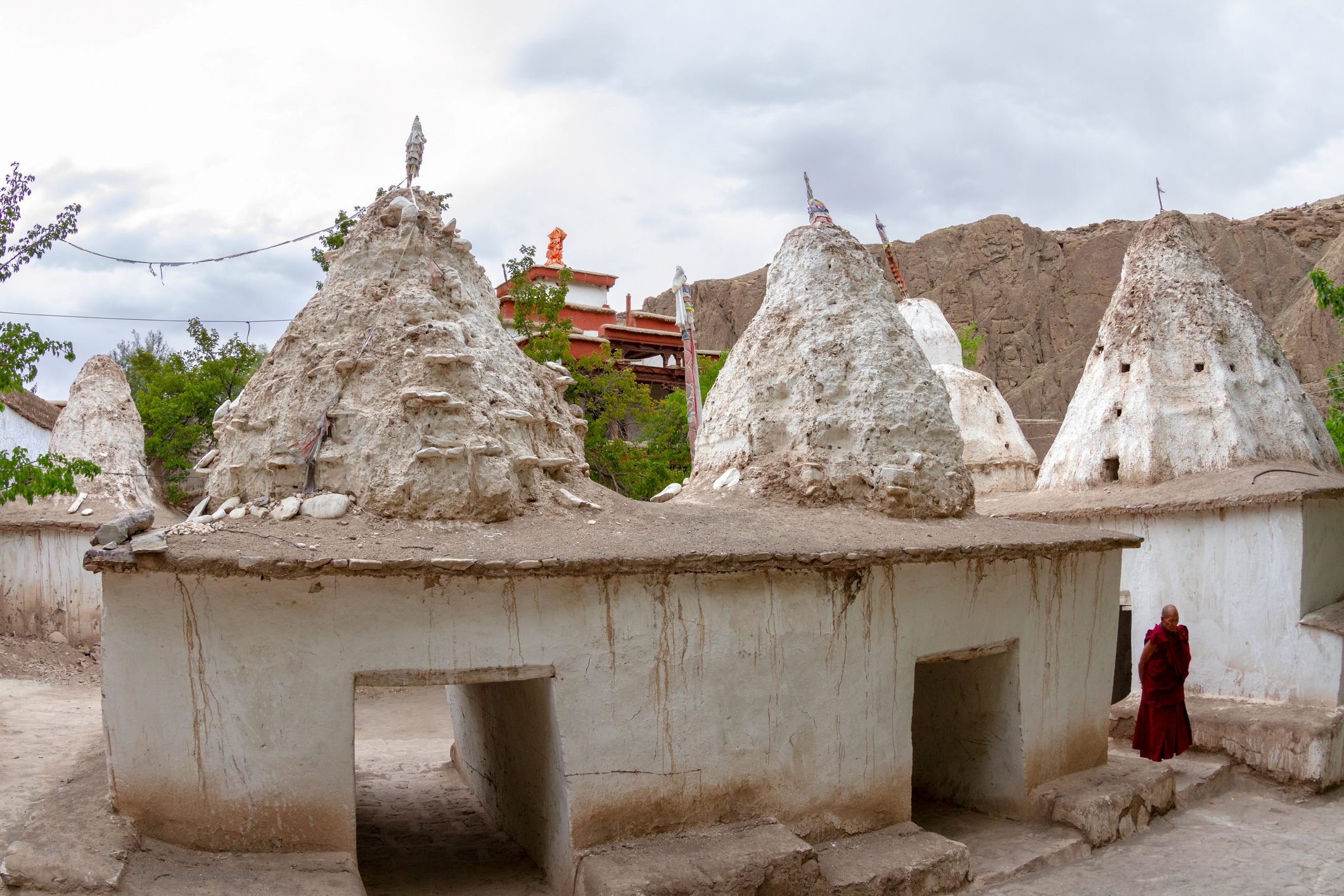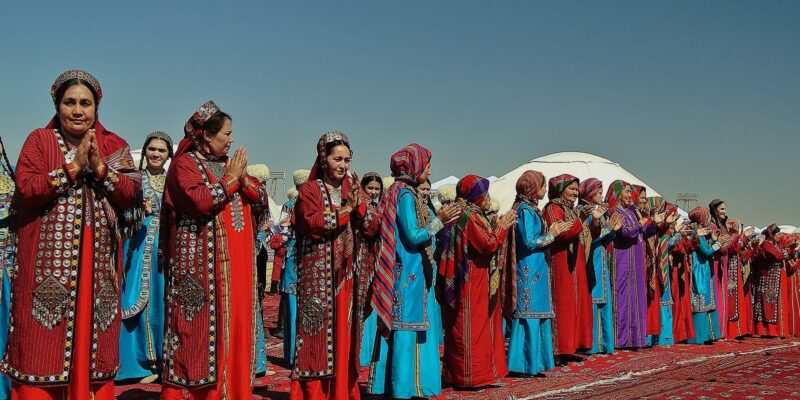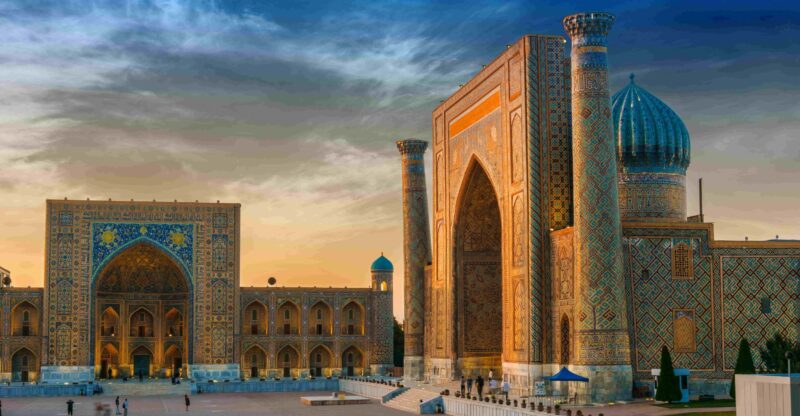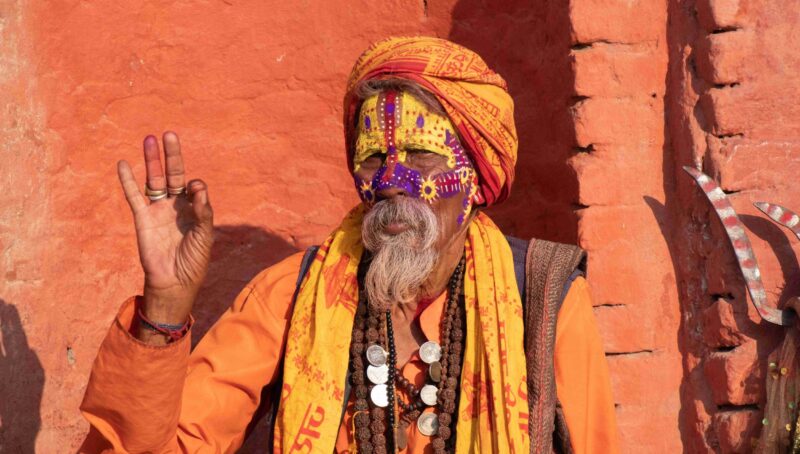| Tour Code | Start | End | Trip Status | Pricing Per person |
|---|---|---|---|---|
| IKL/050726 |
Jul 05, 2026
Sunday |
Jul 15, 2026
Wednesday |
Guaranteed |
£2,095.00
Single Room Supplement: £415.00 |
Cultural Ladakh
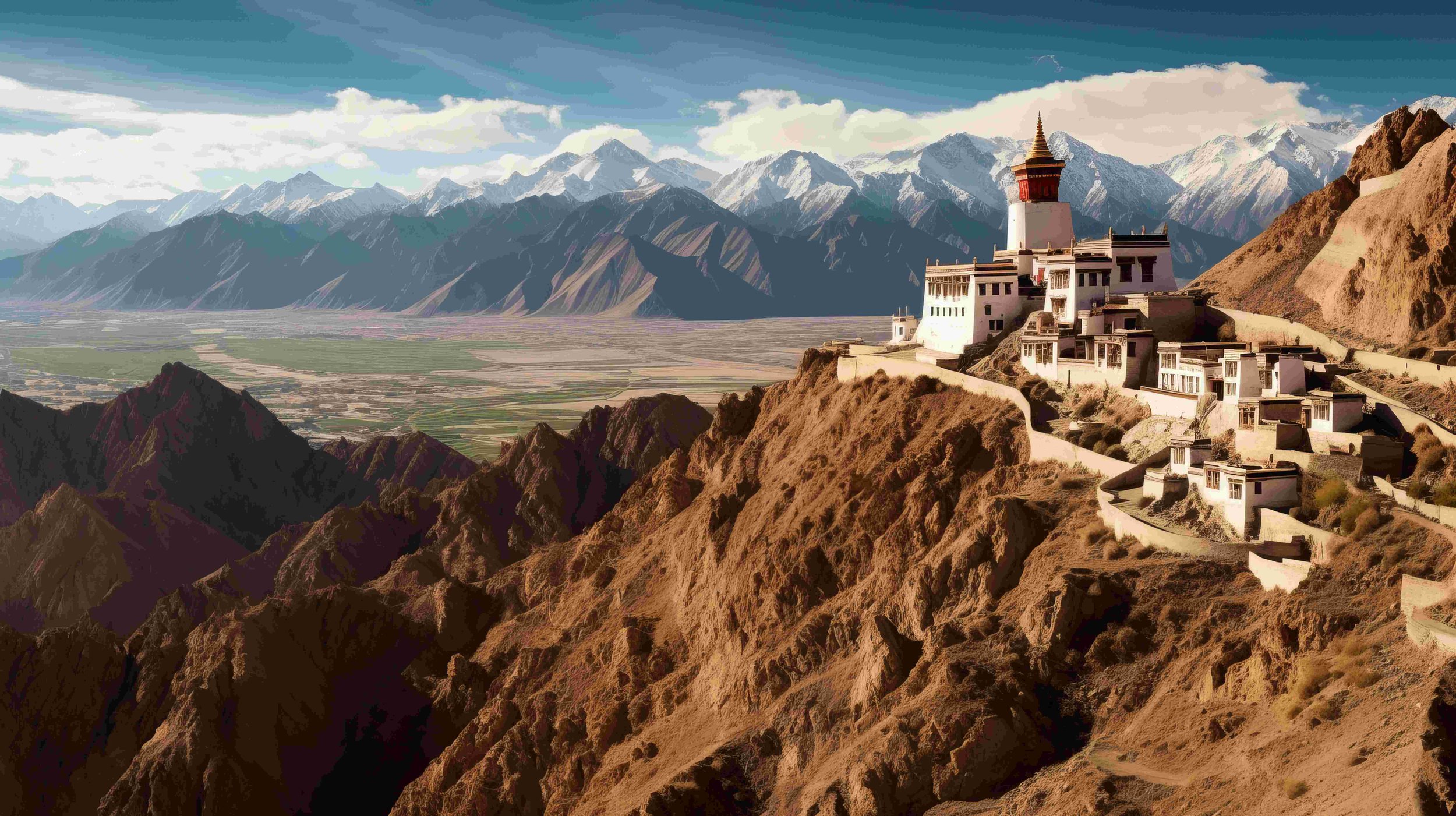
Ladakh is undeniably one of the last areas in India which still affords the visitor a sense of being a pioneer. Having only opened its borders to outside visitors in 2010, the region is an edifying blend of remoteness, natural beauty and timeless links with the past. The name ‘Silk Road’ is a particularly evocative one, conjuring images of now well-rehearsed corridors of tourist interest, but few outsiders can claim have trodden this particular pathway of past trading glories. Ladakh is colloquially known as ‘The Land of High Passes’ and this tour leads you into the heart of the mountainous north of India, a landscape that looks towards China, Tibet and Pakistan for its commercial links, encircled by some of the planet’s highest peaks and most pristine mountainous scenery. We explore the array of beautiful Buddhist religious houses at a wide variety of sites, such as Leh, Samstanling and Alchi and thread our way into the remotest valleys of Nubra. Our drives will take us over mountain passes that surpass any drivable altitude in the world and afford us incomparable views of the stunning snow-clad mountain ranges Zanskar, Karakoram and the Saser massif. The historical links with the Silk Road are always in evidence and we will witness first hand some of the Bactrian camels which made such journeys a reality for so many generations. Northern India is still very sparsely visited by outsiders, but its hidden secrets are a breath-taking mix of cultural fascination and topographical grandeur, rich reward for the adventurous.
Arrival and departure transfers
Overland transport throughout with professional driver
Domestic flight as shown
All accommodation
Services of English-speaking guide / tour leader
Meals as listed, B – Breakfast, L – Lunch, D – Dinner
Entrance fees for sites listed as part of the itinerary
International flights (, contact , us, for expert advice and a quote)
Any airport taxes (except when included with domestic airfares)
Travel Insurance
Visa – when required
Drinks
Items of personal nature
Tips (Discretionary)
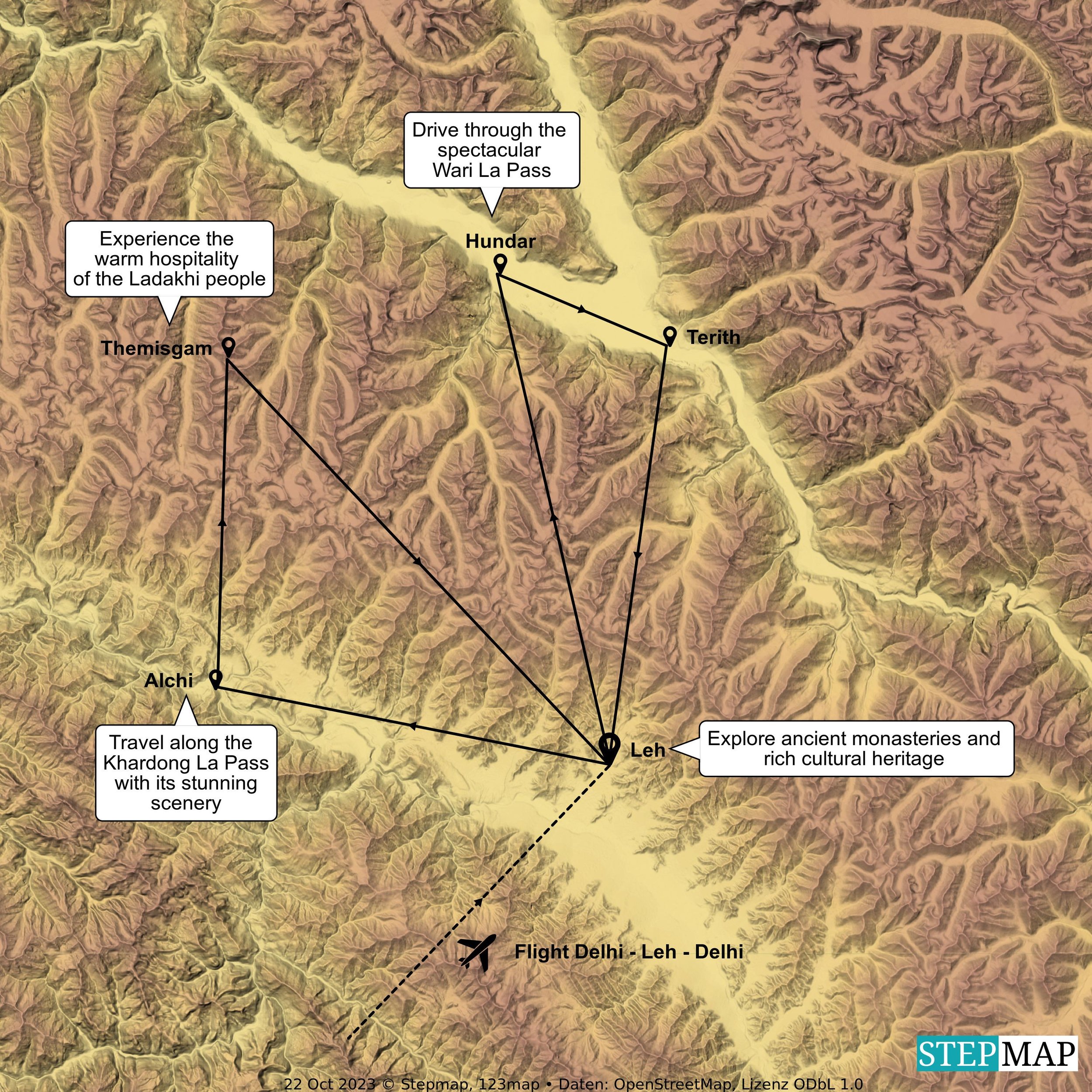
Undiscovered Destinations’ “Cultural Ladakh” tour offers an immersive exploration of India’s remote northern region, renowned for its dramatic landscapes and rich Buddhist heritage. The journey begins in Delhi, where travellers acclimatise before flying to Leh, the capital of Ladakh. Over the next days, participants visit significant monasteries such as Sankar, Shanti Stupa, Leh Palace, Thiksey, Hemis, and Matho, each showcasing unique architectural styles and spiritual significance. The itinerary also includes visits to Nubra Valley via the Khardung La Pass, one of the world’s highest motorable roads, and the remote village of Turtuk near the Pakistan border, providing a glimpse into Ladakh’s Silk Road history. The tour continues with explorations of Alchi’s 12th-century monastery, Lamayuru’s cliffside gompa, and the fertile valley of Themisgam, known for its apricot orchards and historical monasteries. Throughout the journey, travellers experience Ladakhi culture through interactions with local communities, visits to traditional homes, and stays in family-run accommodations. The trip concludes with a return to Leh before flying back to Delhi. This small-group tour is designed for those seeking a blend of adventure and cultural immersion in one of India’s most serene and less-travelled regions.
Leh Palace
The 17th-century Leh Palace offers stunning views of the surrounding mountains and valley, showcasing the region’s historical significance and architecture.
Hemis Monastery
One of the largest and most famous monasteries in Ladakh, Hemis is known for its annual festival and its incredible spiritual and cultural influence.
Nubra Valley and Khardung La Pass
The journey to Nubra Valley via the Khardung La Pass, one of the highest motorable roads in the world, offers breathtaking landscapes and an adventurous drive.
Turtuk Village
Located near the Pakistan border, Turtuk provides a fascinating glimpse into Ladakh's Silk Road history and unique culture, less influenced by mainstream tourism.
Alchi Monastery
A UNESCO World Heritage site, Alchi Monastery is renowned for its well-preserved 12th-century Buddhist artwork and architecture, offering insight into Ladakh's spiritual heritage.
Download the Information Pack
To download the tour full dossier, which includes a complete day-by-day itinerary breakdown and detailed tour information, fill in the details below.

Foreign Office Travel Warnings Before booking your tour, please familiarise yourself with the country specific information provided by the UK’s Foreign, Commonwealth and Development Office (FCDO) – www.gov.uk/foreign-travel-advice. This includes important information such as latest immigration requirements, and details of any travel advisories. We constantly monitor the advice posted by the FCDO. In particular we will always advise clients of any travel warnings. At present there are no warnings against travel to the parts of India that we visit on this tour. Please feel free to contact us should you have any specific concerns or would like to know in detail what measures are being taken to ensure visits remain trouble free and without incident. It should be noted that this information applies to British citizens. Other nationals are asked to check the current position of their respective government. Visa Information At the time of writing British, US and Australian nationals require a visa for a tourist visit to India. For further details please visit the applicable website shown below. British Nationals – www.gov.uk/foreign-travel-advice US Nationals – travel.state.gov/content/travel/en/international-travel.html Australian Nationals – www.smartraveller.gov.au Other nationals should check the latest requirements with the authorities in their home country, or with the destination’s nearest embassy or consulate. Should you require any documentation to support a visa application, such as a letter of invitation, upon request this will be provided by Undiscovered Destinations after receipt of your balance payment. As it is the travellers’ responsibility to ensure that they meet all entry requirements it is essential that you check the rules and any other conditions at the time of booking and again when making your balance payment. In addition, we would strongly advise that you make a final check around two weeks before your arrival. This is important as requirements can change at short notice. Undiscovered Destinations, when possible, will provide guidance about entry rules, but in the first instance please contact the relevant authorities, including the applicable embassy or consulate for assistance. Passports It is your responsibility to ensure that you are in possession of a full passport, valid for at least six months after the date of return to your country. We strongly advise that your passport contains a minimum of two blank pages, as this may be a requirement of the local immigration authorities. In addition, certain countries will stipulate that the two blank pages are opposite each other. If you are unable to meet these requirements, you may be refused boarding by your airline or denied entry by the immigration authorities. For specific information about the requirements for your destination please check with the country’s embassy or consulate. Alternatively, UK citizens can visit www.gov.uk/foreign-travel-advice. Vaccinations & Protection As with travel to most parts of Asia, we strongly recommend that you contact your doctor’s surgery or a specialist travel clinic for up-to-date information, advice, and the necessary vaccinations. For a visit of less than one month, almost certainly you will be advised to have immunisations against the following: Diphtheria and Tetanus, Hepatitis A, Typhoid, Meningitis. The use of a DEET-containing insect repellent is highly recommended. The legal status and regulation of some medicines prescribed or purchased in your home country can be different in other countries. If you are travelling with prescription or over-the-counter medicine, travellers from the UK can refer to the guidance provided by the National Travel Health Network & Centre and published on the Travel Health Pro website. For further information on the legal status of a specific medicine, you will need to contact the embassy, high commission or consulate of the country or territory that you are travelling to. Travel Insurance It is a condition of booking with Undiscovered Destinations that you have adequate valid travel insurance. It is your responsibility to arrange appropriate travel insurance and ensure you have read and understood the full terms and conditions of your travel insurance policy to ensure that you are covered for all activities you intend to undertake whilst on the tour, including all optional activities. Your Insurance Policy must fully cover you for medical expenses (including cover for Covid-19 conditions) and emergency repatriation to your home country and be valid for the entire duration of your holiday. Local Conditions When travelling to our destinations, many of which are underdeveloped and untouristed by mainstream tourism, a good deal of patience and a sense of humour is an important attribute. This will help you to cope with problems such as ageing or poor infrastructure and when maintenance may not be as high as we would always like. The choice of appropriate accommodation in some towns and cities (particularly the smaller places) can be limited, and standards of both service and maintenance can be less than polished. Guides and other service providers in some of our destinations do not always have the decades of collective practice and experience that their counterparts in more developed countries can draw upon. Although we will always try and resolve any issues as quickly as possible, on occasions there may be some shortcomings which no matter how hard we try will be unavoidable.
